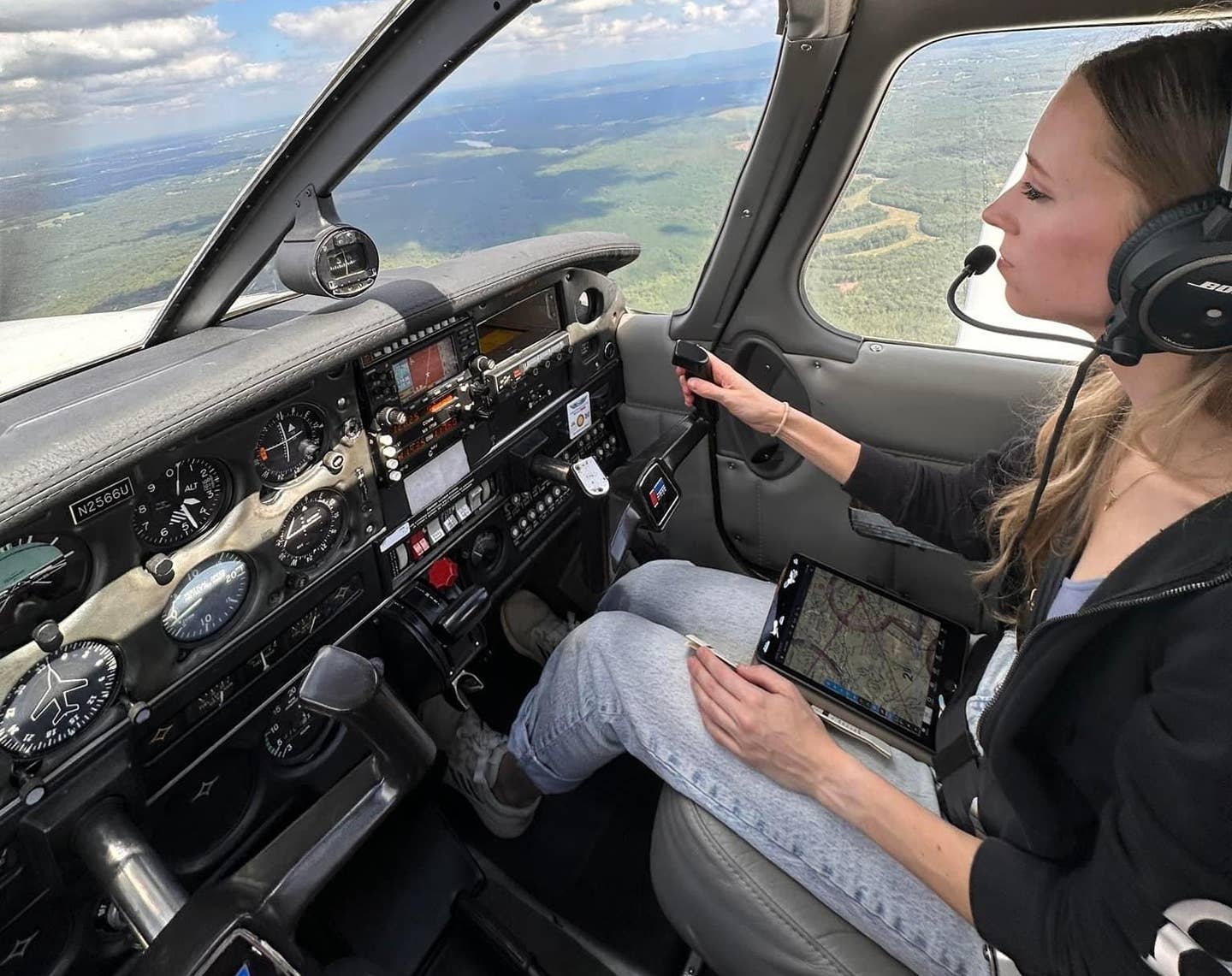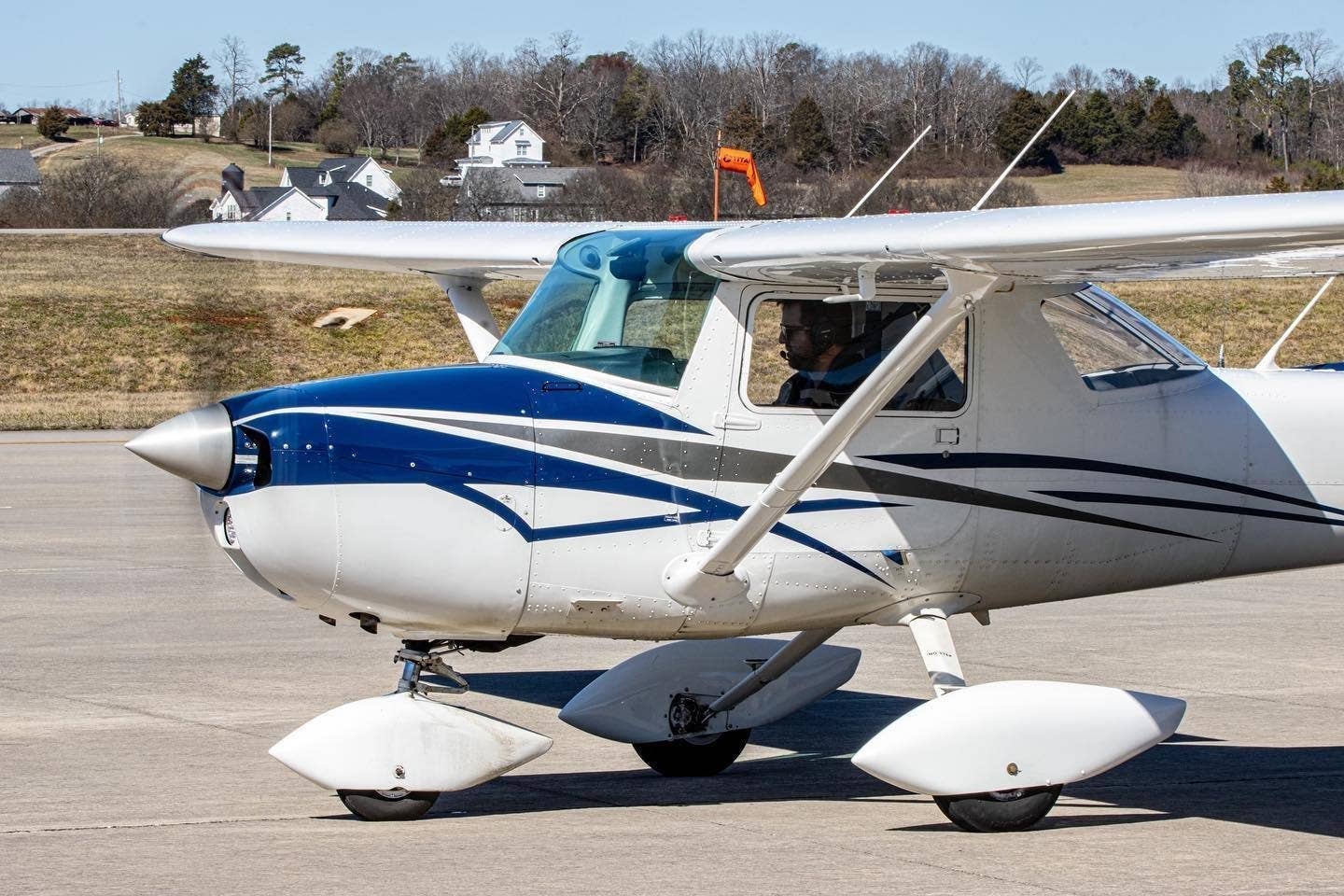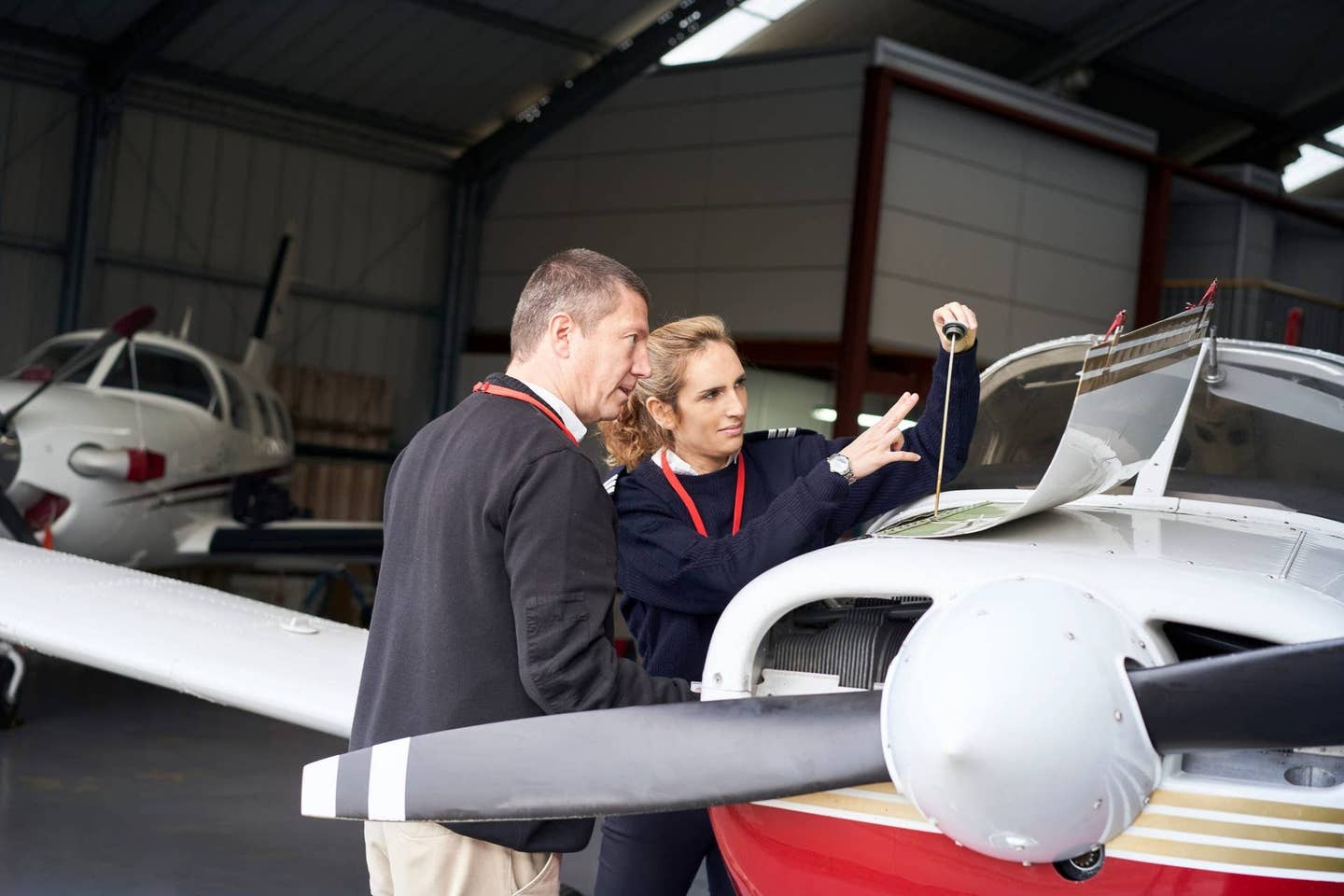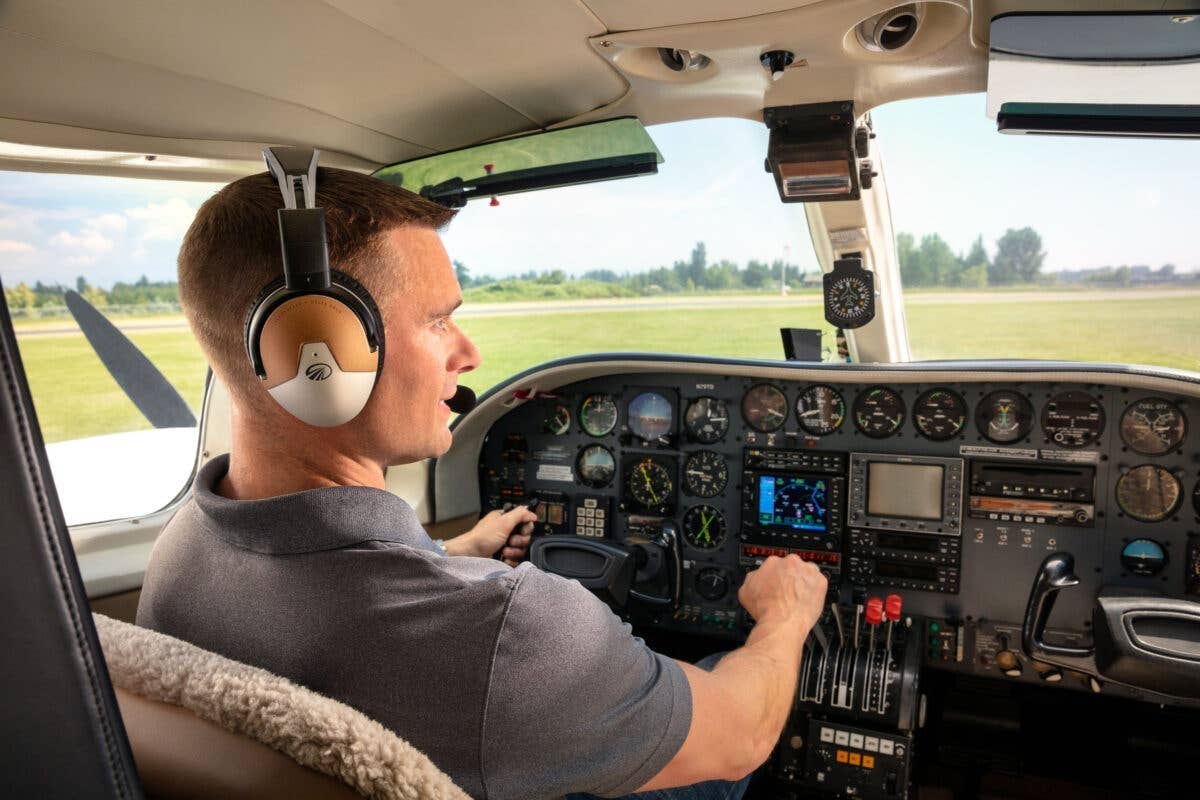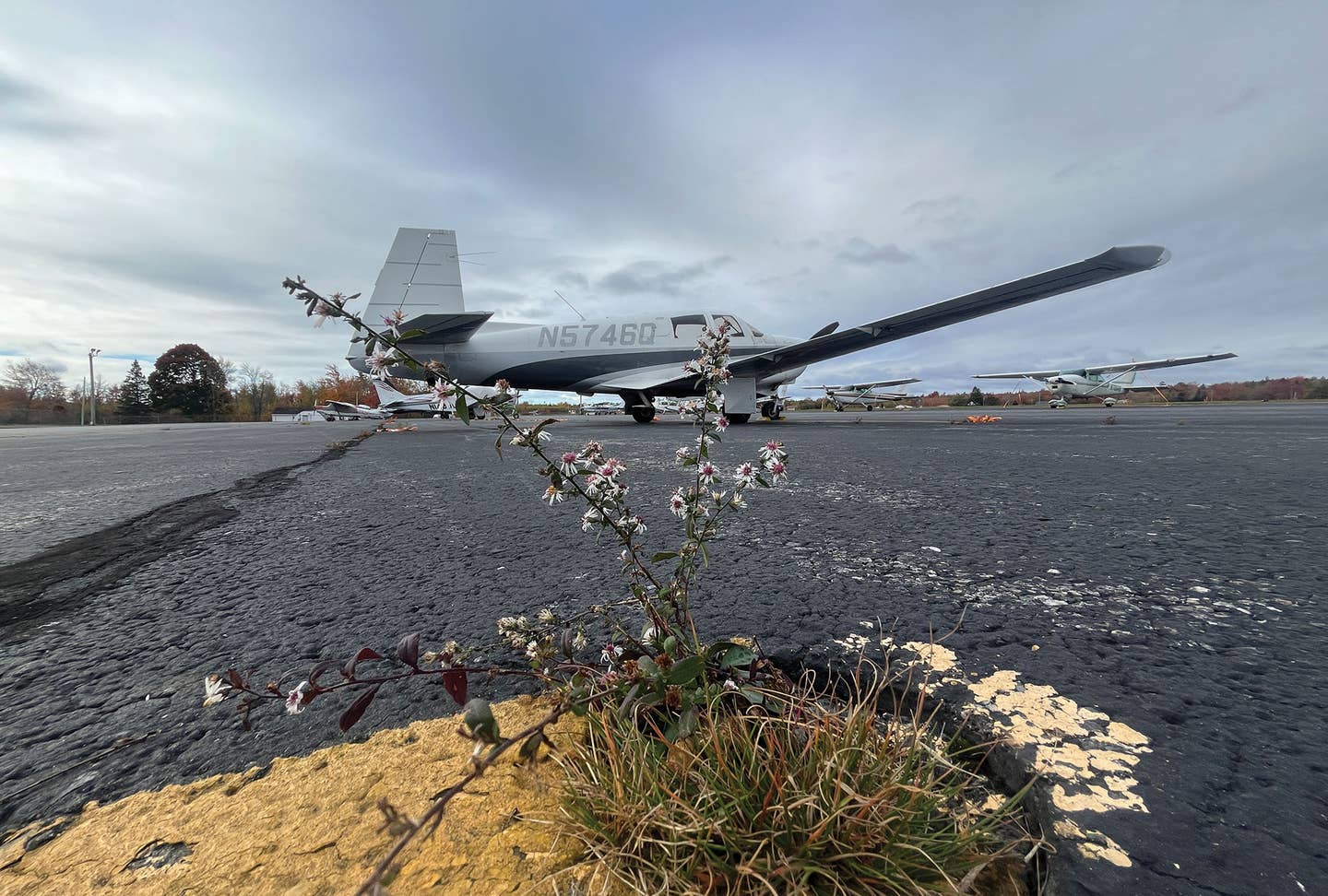 My foot pushes on the rudder pedal but nothing happens. I push harder. Still nothing. And so I stomp, hoping that the barn-door-sized rudder will finally budge. Like a large boat churning in open waters, the blimp enters a barely perceptible turn. It's slow, but persistent, and so I step on the opposite rudder. Rather, I lift my body up and push with my entire weight on the opposite rudder. A long time passes before the blimp responds again.
My foot pushes on the rudder pedal but nothing happens. I push harder. Still nothing. And so I stomp, hoping that the barn-door-sized rudder will finally budge. Like a large boat churning in open waters, the blimp enters a barely perceptible turn. It's slow, but persistent, and so I step on the opposite rudder. Rather, I lift my body up and push with my entire weight on the opposite rudder. A long time passes before the blimp responds again.
We wander through an ocean of air, at the whim of the surrounding environment. The slightest updraft lifts the blimp, and I wrestle a giant wheel to the right of the pilot's seat for elevator control and level flight. Again, it's a physically demanding task, and sometimes it takes both of my untrained arms to have an effect on the 192-foot long and 202,700-cubic-foot airship.
Goodyear's Spirit of America doesn't have dual controls, so it's a good thing that everything happens at a snail's pace: cruise speed is 30 mph, and top speed is just 50 mph. Next to me in the seven-seat gondola, seasoned pilot Jon Conrad (with more than 6,000 hours in blimps) explains airship operations as we low-and-slow it through the Los Angeles Basin. Like a newly detailed car driving slowly around the block, we're cruising to be seen. And we're hard to miss: as night falls, more than 82,000 custom-made, high-brightness LEDs light up our left side.
En route to Santa Monica Airport, Jon takes the controls so he can demonstrate a low pass. Dives and climbs are at exaggerated angles of approximately 30 degrees, and I hold on to the seat (there are no seat belts). "Very nice; thank you!" beams the tower, and patrons of the on-field restaurant, Typhoon, gather on the deck to watch. At Whiteman Airport (15 nm away, but 35 minutes later), it's my turn. While puttering along on final, and eventually short final, the runway strikes me as very narrow and we seem, well, relatively wide. "Are you sure about this?" I question Jon (visions of sideswiping the tower are unsettling). "How will other pilots in the pattern handle our slow speeds?" But he chuckles, "If you can't see the blimp, then you shouldn't be in the pattern." After lots of rudder and wheel elevator, patience and anticipation, I'm exhausted but exhilarated after the world's slowest fly-by.
"The blimp flies based on a hybrid of aerodynamics and aerostatics," explains Jon. "As with a fixed-wing aircraft, we use aerodynamics to turn it and go up and down. But to maintain the shape of the blimp's envelope, made from polyester fabric, we have a pressure system. Inside of that are two air chambers called ballonets that can be inflated or deflated as helium expands and contracts when the blimp rises and descends." Powered by two 210 hp Continental IO-360 engines, the Goodyear blimp is equipped with custom-made, reversible-pusher Hartzell propellers. Empty weight is 12,840 pounds; when inflated with helium, however, the blimp weighs no more than 200 pounds.
To earn a blimp rating through Goodyear, applicants must be fixed-wing pilots with commercial, instrument and multi-engine ratings. A background in training is helpful, since each pilot will be required to train the next newcomer. But turnaround doesn't happen often. "When I was hired, I was the first new pilot at the California base to be brought on in 31 years," says Jon. "The previous pilot had to teach me how to fly. Because it only has single controls, it's a trust-building exercise. The instructor has to be confident that the student isn't going to make a bad decision and put the aircraft in harm." Training can take up to a year, and may involve a whopping 500 hours of flight time. "It's a lot of time because it's a unique aircraft," justifies Jon. "The only way to build experience is to actually go out and do it. There's no flight simulator. You have to do all the training in the blimp, and every landing is completely different than the previous one."
Because the blimp is extremely susceptible to atmospheric conditions, landings can be very difficult. "It's a very simple aircraft, but becomes complicated when out in the weather. Anytime the wind changes, the blimp wants to change too. If there are clouds and then the sun comes out, the blimp becomes lighter or heavier---the static condition of the blimp changes based on the environment. You have to be a meteorologist to fly a blimp," comments Jon. "Furthermore, you're landing to a ground crew of 13 people---live human beings walking around an aircraft with two spinning propellers. They trust you to keep their safety in the forefront of your mind, and if the flight approach doesn't look good, you'll have to go around. Sometimes you make perfect landings and sometimes you have to go around."
Our landing at the blimp base in Carson, Calif., was the last of the day, so the ground crew fastened the blimp onto a 32-foot mooring mast, where it overnights. Secured by a steel ball at its nose, the blimp is free to rotate 360 degrees should the wind shift. (Like a weather vane, the blimp will always point itself into the wind.)
Passenger flights are given to families of Goodyear clients such as Toyota, Ford and GM, and interacting with younger visitors is Jon's favorite part of life as a blimp pilot. "Children may be scared and overwhelmed on the ground, but when you get them in the air, they turn into a different person and shake your hand. This one little girl grabbed my leg, gave me a hug and was so happy. I have yet to find another job where people get so excited---airline pilots certainly don't go through that."
In addition to passenger flights and high-visibility night-sign flights, the blimp is often used to film sporting events. "We circle the game over and over, but it never gets boring," asserts Jon. "We're very busy. We watch on monitors and have to pay attention to the director. Sometimes they want beauty shots, sometimes play-by-play. We need to be aware of who is winning and who is losing. We have to contend with ATC, our ground crew back at the base and public relations inside the truck parked at the game."
But no matter where the blimp flies, the overriding purpose is the same: to spread goodwill and say "thanks." Each year, more than 60 million Americans catch a glimpse of a Goodyear blimp. "We're promoting Goodyear products while we fly," says Jon. "It's like someone giving you keys to a Porsche and telling you to go drive for three hours and show off." Well, maybe not quite as fast.
For more, visit www.goodyearblimp.com.

Subscribe to Our Newsletter
Get the latest Plane & Pilot Magazine stories delivered directly to your inbox


